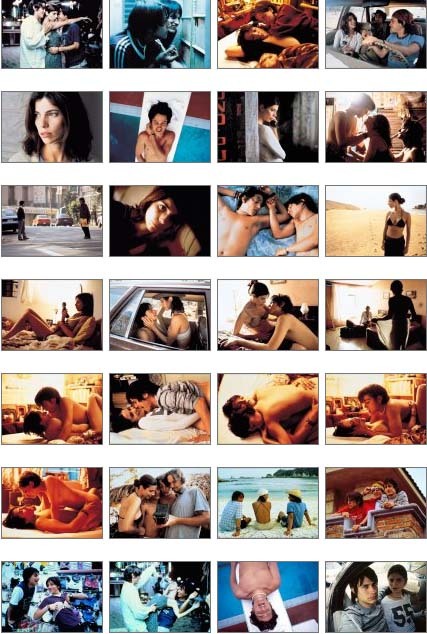by Caetlin Benson-Allott
Jump Cut

Seventeen years ago, video critic Charles Tashiro warned that “you can wait for it on video, but ‘it,’ like Godot, will never arrive,” and today his aesthetic lament carries political implications as well (16). Video-tapes and -discs have changed our experience of motion picture exhibition significantly over the past thirty-odd years, due in part to the unprecedented proliferation of adaptation techniques like letterboxing, Pan & Scan editing, and color correction. However, some movies also lose footage during their transfer to video, particularly sexually and politically charged footage. In these cases, you see less of the movie on video than the full theatrical release. Motion pictures do go through many editing processes over the course of their production and distribution, of course, but these just-for-video elisions cut their movies’ narratives, tenor, and arguments, often without acknowledging the loss.[1] [open endnotes in new window] Furthermore, these video excisions almost exclusively affect international productions. The result is that this video editing effectively determines who gets to see which international releases and what parts of them, given that most U.S. viewers noe choose to or must “wait for it on video” (Klinger 4). This media-specific censorship suggests that video faces different moral standards than the cinema, standards that are enforced by the MPAA’s self-interested nationalist application of its rating system. However, it would be inaccurate to characterize either the MPAA or its member studios as specifically xenophobic. Rather they self-censor in order to appease video rental and sell-through outlets' conservative economic clout.
Alfonso Cuarón’s Y tu mamá también is only one of the many victims of the U.S. video industry’s commercial adversity to foreignness and sexuality. However, the changes made for U.S. video distribution of Cuarón’s film are not only egregious but also exemplary, because they highlight the political ramifications of the MPAA and U.S. studios’ new economic dependence on video distribution. Specifically, MGM cut five minutes from Y tu’s film version in order to produce an R-rated video acceptable to the major video outlets’ standards for family friendly commercial viability. Although the studio also distributed an unrated “special edition” of Cuarón’s movie as it appeared in theaters, the R-rated standard edition the director put together at MGM’s behest led Cuarón to lament,
“I castrated my movie” (Hirschberg 15).
As I will show, Cuarón had to cede to MGM’s demand for a family-friendly video version of Y tu in order to secure any U.S. distribution for his film. However, this more marketable Y tu is missing more than a few penises and pelvic thrusts. Cuarón also had to cut the sexual mestizaje that completes his film’s narrative arc and political allegory.[2] This climax, the homosexual union of the movie’s teenage male protagonists, carries both dramatic and political significance in the film because Cuarón uses Mexico’s national tradition of allegorical filmmaking to condemn the neoliberal turn in Mexican politics.[3] Losing the culmination of the boys’ sexual narrative garbles Cuarón’s critique of government corruption and economic exploitation in Mexico. In this way, the editing sanitizes the film for some of the same multinational corporations that benefit most from recent trade liberalizations in Mexico, of which NAFTA is one (notorious) example.[4]
Y tu’s U.S. video distribution thus made it the subject of the same transnational neoliberal forces that it seeks to critique. For that reason, in this article I will employ both textual analysis and industry history to demonstrate how the giant video retailers have rendered video an even more fiscally—as so politically—conservative format than film. The first section of the essay details what gets censored from the R-rated Y tu, while the second section explores how those losses undermines the film’s larger political critique. My conclusion then situates Y tu mamá también within the recent upheaval in U.S. film and video distribution that made these changes seem fiscally necessary to its distributors. In this manner, I hope to communicate the political significance of Hollywood’s economic dependence on video distribution.
To Read the Rest of the Essay
No comments:
Post a Comment